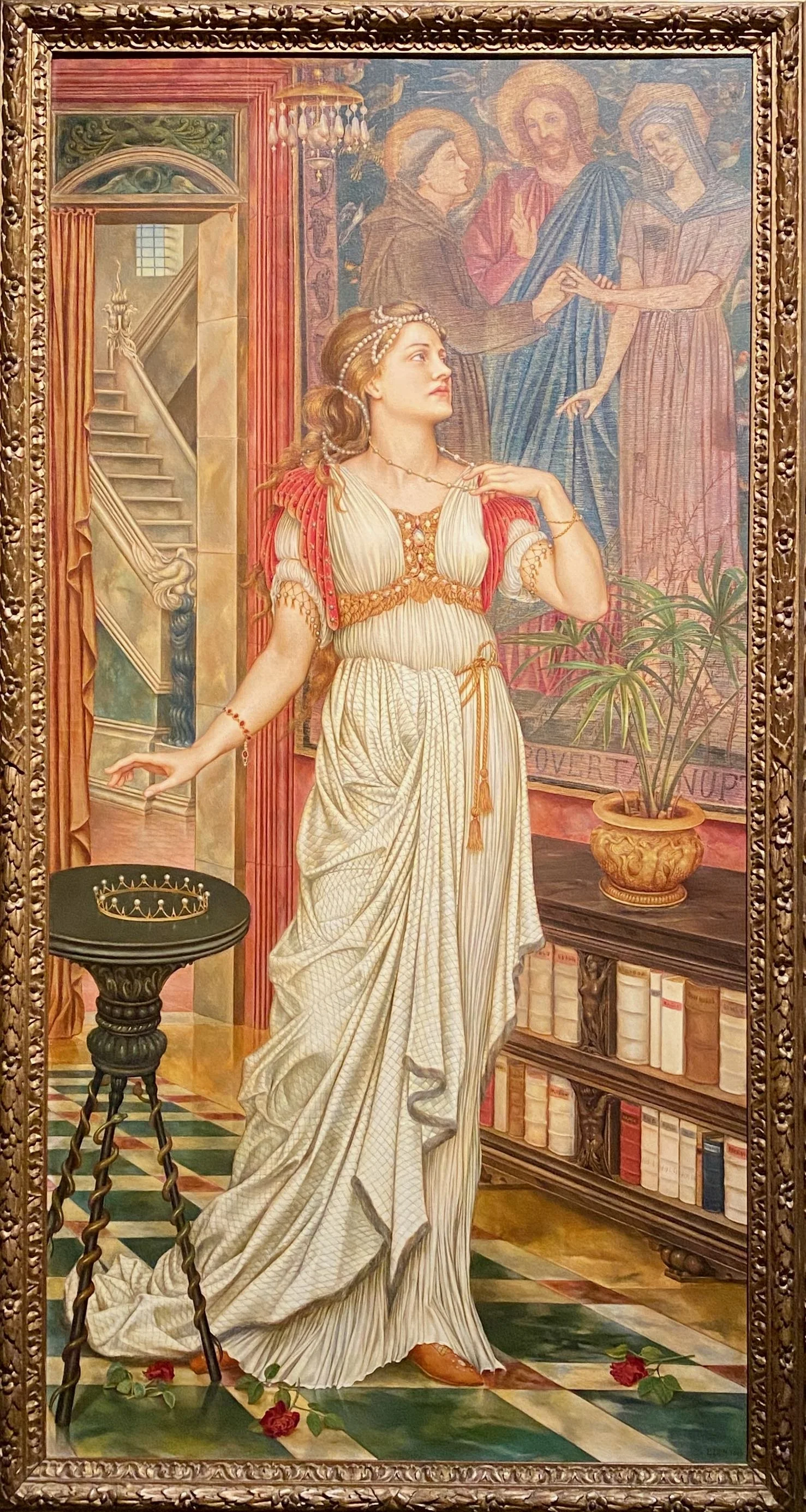Painted Dreams: The Art of Evelyn De Morgan at Wolverhampton Art Gallery
Walking into Painted Dreams at Wolverhampton Art Gallery felt like stepping through a portal and not just because of the radiant, mythic realms Evelyn De Morgan conjured on canvas. It was also a journey back to 1907, when this very gallery hosted what was then the most ambitious solo exhibition of work by a woman artist in Britain. Recreated in 2024 with care and reverence, the exhibition is a fitting tribute to an artist whose career and convictions were well ahead of her time.
This was actually the first time I’d seen De Morgan’s work and to say I was blown away by it would be quite the understatement. There’s something so striking about the saturated, jewel-toned palette she favoured. Her women are strong and contemplative, often cast in allegorical or mythological roles, with long, elegant, ethereal faces. It really was like walking through a dream world.
But it’s not only the visual language that enchants. It’s what she does with these dreamy scenes; twisting familiar myths, embedding feminist messages, and weaving in spiritual and political commentary.
The exhibition highlights this beautifully. It traces her evolution from early Renaissance-inspired works to increasingly symbolist, socially conscious paintings, always with exquisite attention to detail and composition.
We learn how De Morgan, born into an upper-class London family, defied expectations to attend the Slade School of Art, exhibit in progressive London galleries, and sell her work to the elite, all while navigating a patriarchal art world that doubted women’s intellectual and creative capabilities.
Especially powerful are the works that reflect De Morgan’s pacifism and concern for social justice. Her paintings of figures in distress, angels hovering over conflict, and otherworldly scenes of hope and transcendence speak to the psychological toll of war. These aren't just painted dreams; they’re painted protests, painted philosophies, painted visions of another way to live.
And yet, despite the emotional impact and historical importance of the show, one major element was missing: there was no exhibition catalogue. No postcards. No merchandise. Not a single magnet or bookmark. For an exhibition that seeks to revive and re-centre De Morgan’s legacy, this felt like a serious oversight. Visitors like me — eager to take a piece of the show home, to share her work more widely — are left empty-handed.
Still, the exhibition succeeds where it matters most: it gives Evelyn De Morgan her due. It presents her not as a curious footnote in Victorian art, but as a force, a visionary whose paintings offered, and still offer, both beauty and resistance.
You can find out more about Evelyn De Morgan at the De Morgan Foundation


